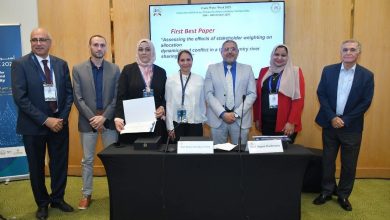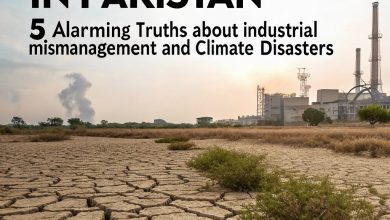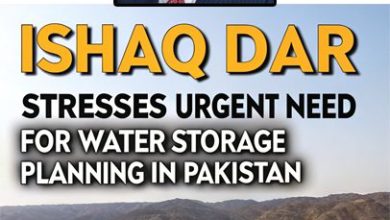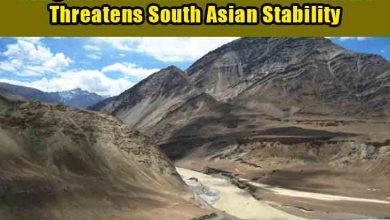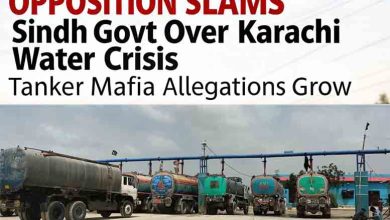Pakistan’s Water Crisis: The Cost of Sugarcane and Rice
Pakistan’s water crisis worsens due to sugarcane and rice farming. Discover how inefficient irrigation and crop choices threaten agriculture, economy, and food security.
Pakistan’s water crisis is spiraling out of control. Ranked among the most water-stressed countries globally, Pakistan faces the looming threat of depleting its freshwater resources within the next few decades. With agriculture consuming over 90% of its freshwater supply, the cultivation of water-intensive crops like sugarcane and rice is worsening an already dire situation.
From inefficient irrigation systems to poor crop choices and policy mismanagement, the country stands on the verge of agricultural collapse, food insecurity, and economic instability.
Why Sugarcane and Rice Are Draining Pakistan’s Water
Despite its dwindling water resources, Pakistan continues to cultivate sugarcane and rice across millions of acres. These crops consume more than 32 million acre-feet (MAF) of water annually — a staggering volume for a country with only 13.5 MAF of surface water storage capacity.
Key Issues:
-
Overreliance on flood irrigation.
-
Weak regulatory oversight on groundwater extraction.
-
Lack of incentives for farmers to switch to water-efficient crops.
-
Outdated infrastructure causing seepage and water loss.
Groundwater Depletion in Punjab
Punjab, Pakistan’s agricultural powerhouse, is experiencing extreme groundwater depletion. Farmers extract an estimated 50 MAF of groundwater annually, significantly surpassing the national storage capacity. This over-extraction is primarily driven by the water needs of rice and sugarcane.
-
Aquifers, which took thousands of years to form, are now under severe stress.
-
Farmers drill deeper, tapping into saline water, degrading both soil and crop yields.
-
If unchecked, Punjab’s groundwater crisis could cripple national food production and displace millions.
Waterlogging and Salinity in Sindh
While Punjab battles depletion, Sindh is grappling with waterlogging and soil salinity due to excessive irrigation.
-
Around 50% of Upper Sindh’s irrigated land is affected.
-
Sukkur Barrage, a crucial irrigation hub, loses nearly 4 MAF of water annually to seepage and distribution inefficiencies.
-
Rising water tables are turning fertile lands into barren salt flats.
Economic Impact:
-
The World Bank estimated a $1.5 billion annual loss due to soil salinity in the early 2000s.
-
This figure is likely much higher today, worsening food insecurity and dependence on costly imports.
Sugarcane: A Thirsty and Inefficient Crop
Despite being one of the most water-inefficient crops, sugarcane enjoys strong political support and subsidies.
Shocking Stats:
-
Grown on 3.2 million acres, consuming 18 MAF annually.
-
Accounts for 17% of Pakistan’s water use.
-
CWP (Crop Water Productivity): Only 2.28 kg/m³ vs. global average 3.5 kg/m³.
-
Low sucrose content (8–10%) compared to international standards (12–14%).
➡ 1 kg of refined sugar needs 1,750 liters of water.
➡ 6 million tons of sugar produced yearly = 10.5 MAF of water used.
This makes sugar production one of the least sustainable agricultural practices in Pakistan.
Rice Cultivation: The Virtual Water Export
Rice is another major culprit in Pakistan’s water crisis.
Rice by the Numbers:
-
Grown on 8.9 million acres.
-
Uses 14 MAF of water annually.
-
CWP: As low as 0.23–0.45 kg/m³ compared to Egypt’s 0.79 kg/m³.
Farmers often use double the necessary water, wasting 3.65 MAF annually.
Even worse, 4 million tons of rice are exported annually, translating to 8.1 MAF of “virtual water” leaving the country — equal to 1.5 years of Karachi’s water supply.
This practice directly contradicts Pakistan’s national interests during a worsening water crisis.
Solutions and Recommendations
To address Pakistan’s water crisis, immediate and coordinated reforms are essential.
Policy and Agricultural Reforms:
-
Ban or reduce subsidies on water-intensive crops like sugarcane and rice.
-
Encourage crop diversification to less water-intensive alternatives (e.g., millet, pulses).
-
Introduce and enforce water-efficient irrigation systems, such as drip and sprinkler irrigation.
-
Invest in rainwater harvesting and aquifer recharge techniques.
-
Develop real-time water monitoring systems and strict groundwater regulation.
-
Educate farmers about modern agricultural practices and water-saving techniques.
Conclusion: The Cost of Inaction
Pakistan’s water crisis, largely fueled by sugarcane and rice cultivation, poses a grave threat to national stability. With 32 MAF of annual water going to two highly inefficient crops, Pakistan is trading its most precious resource — water — for short-term agricultural gains.
Unless urgent reforms are implemented:
-
Food security will deteriorate.
-
Economic losses will mount.
-
Millions of livelihoods will be at risk.



